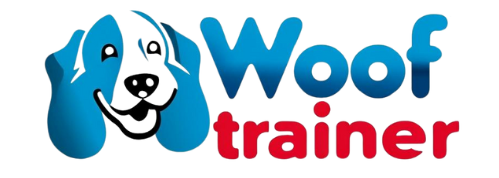When a dog owner searches for what to look for when buying a stainless steel dog bowl, the decision often comes down to subtle but meaningful quality indicators. A bowl that looks fine superficially may hide compromises in alloy, thickness, or construction that shorten its life or harbor risks. Below is a systematic guide—framed as layers of decision—from broad quality indicators to practical bowl selection for your dog.
Why Stainless Steel?
Before diving into details, it’s worth reaffirming why stainless steel is one of the best materials for dog bowls:
- Stainless steel is non-porous and hygienic, making it harder for bacteria to cling or multiply.
- It does not leach chemicals (unlike cheaper plastics) and is typically dishwasher-safe.
- It is durable and resists cracking or chipping (unlike ceramic) when dropped.
- However, not all stainless steel is equal—this is where quality indicators become essential.
Quality Indicators to Watch For
When evaluating stainless steel bowls, pay attention to the following key quality indicators—these are often overlooked in superficial marketing claims.
1.Stainless Steel Grade (Alloy and Certification)
One of the most critical factors is the grade or alloy designation of the stainless steel used. The grade determines resistance to corrosion, strength, and safety in contact with food.
- Food-grade alloys such as 304 (18/8) or 304L (18/10) are widely preferred. These contain about 18% chromium and 8–10% nickel, which improves corrosion resistance.
- If a bowl is simply labeled “stainless steel” without specifying grade, that’s a red flag—cheaper or lower grades may be used.
- After some recalls involving metal contamination (e.g., traces of cobalt-60 via recycled metal), it’s wise to favor brands that test raw material batches or certify heavy-metal content.
- Some manufacturers will also mark compliance with NSF or similar food safety standards; that is a strong positive.
Tip for buyers: Look for explicit markings such as “304 stainless,” “18/8,” or “food grade.” Avoid listings that exclusively market “pet use only” without certification—this sometimes signals lower quality.
2. Thickness / Gauge / Weight
The thickness of the metal sheet (often expressed as gauge or in mm) directly correlates with durability, rigidity, and resistance to denting.
- Thin, flimsy bowls may deform or warp over time. In Canine Journal’s testing, thinner bowls were more prone to dents under pressure.
- A heavier bowl (within reason) tends to stay put and withstand rougher use. Some premium bowls like Yeti Boomer come in double-walled constructions to combine weight and durability.
- That said, extremely heavy bowls may be cumbersome to lift or clean, so a balance is ideal.
3. Finish, Welding, and Seams
A bowl’s finish and how welds or seams are handled influence hygiene and longevity.
- Look for seamless bowls or bowls where seams are ground and polished smooth—these reduce crevices where bacteria could accumulate.
- Matte/brushed finishes may hide scratches better than mirror-polished ones, but the smoother the interior, the less residue will cling. In fact, polished finishes may assist cleaning though they show smudges more.
- Welds (if present) should appear clean, well blended, and free of sharp edges.
4. Corrosion and Rust Resistance
Though stainless steel is often marketed as “rust-proof,” in practice it’s rust-resistant, not impervious. Under certain conditions, rust can develop.
- Exposure to chlorine (in water or cleaners) can damage the protective chromium oxide layer and trigger corrosion.
- Avoid abrasive cleaning tools or steel wool that embed foreign metal fragments into the bowl surface.
- Well-made bowls will resist pitting, rust, or discoloration, even after years of use.
5. Stability, Base, and Anti-Slip Features
A bowl may meet all material and finish criteria, but if it constantly slides or tips in use, it’s functionally inferior.
- Many quality bowls include a rubber or silicone base to prevent sliding. But buyers should confirm that base is sturdy, removable (for deep cleaning), and doesn’t trap grime.
- Some bowls embed non-slip rings invisibly, which perform better than surface adhesives.
- Alternatively, a dog bowl mat or puck-style holder can add stability without complicating the bowl design.
6. Cleanability & Dishwasher Safety
Ease of cleaning is a practical but essential quality indicator:
- Dishwashers provide consistent, high-temperature sanitation; top-tier bowls will explicitly state they are dishwasher-safe.
- Bowls with removable parts (rubber rings, insert liners) should allow disassembly for deep cleaning.
- Avoid bowls labeled “hand wash only”—this is often a warning sign that the bowl may degrade under high heat or have inferior materials.
Choosing the Right Bowl (Fit, Form, and Use)
After vetting quality, one must then choose the right bowl for your dog’s size, feeding habits, and environment. Here are practical considerations.
1. Size, Shape, & Capacity
Selecting a bowl that matches your dog’s size and eating style improves comfort and reduces mess.
- The bowl should hold all the food (or water) your dog typically consumes in one meal with additional margin.
- For dogs with narrow muzzles, a deeper, narrower bowl helps direct food intake. Conversely, broad-muzzled dogs need wide, shallow bowls.
- For flat-faced breeds (Pugs, Bulldogs), rims and junctions between walls and the bottom should be gentle; extremely deep bowls may make it hard to reach food. In these cases, bowls designed specifically for brachycephalic breeds—or bowls with sloped or curved walls—are better choices.
- If your dog tends to spill water or push the bowl, opt for extra capacity in the water bowl.
2. Elevated or Floor-Level Bowls
The decision to use an elevated bowl depends on health, breed, and feeding convenience.
- Elevated models may help dogs with arthritis, neck discomfort, or back strain by reducing bending.
- However, in some breeds or dogs prone to bloat, elevated feeders may increase risk. Always consult a veterinarian if in doubt.
- Many stainless steel bowls are compatible with raised stands or frames.
3. Slow Feed, Maze, or Divider Styles
For dogs who “inhale” their food, slow-feeder stainless steel bowls with ridges or maze patterns are an option—but they must be well made.
- Ensure the ridges are properly spaced—not so shallow they’re bypassed, not so tight they frustrate the dog.
- A durable base is essential, since pushing or tugging against ridges is frequent.
- Confirm that the bowl remains dishwasher-safe and that residue doesn’t collect between ridges.
4. Outdoor or Travel Considerations
If the bowl will be used outdoors or transported:
- Look for bowls with heavier weight or securing mechanisms (hooks, carabiners) so they’re less likely to tip.
- A bowl with a sealed seam or welded design will fare better against the elements.
- For travel, collapsible or nesting stainless steel models exist—but ensure they still meet grade and thickness standards.
Purchase Checklist & Real-World Examples
Below is a quick checklist you can carry when browsing or shopping online:
| Feature | Desired Specification | Why It Matters |
|---|---|---|
| Grade Marking | “304 / 18/8 / food grade” | Ensures alloy is safe and corrosion-resistant |
| Thickness / Weight | Medium to heavy gauge | Improves durability and resists warping |
| Seam / Weld | Smooth, ground weld or seamless | Reduces bacterial hiding spots |
| Base / Grip | Rubber ring or hidden non-slip | Prevents tipping or sliding |
| Dishwasher Safe | Explicitly stated | Facilitates sanitization |
| Brand Testing / Certification | Heavy-metal screening or NSF | Adds assurance against contamination |
| Shape / Size | Match muzzle & food intake | Prevents frustration or mess |
| Compatibility | Works with elevated stand or travel | Enhances long-term usability |
Example scenario:
A first-time buyer owns a medium-sized Labrador Retriever. They find a bowl marketed simply as “stainless steel dog bowl.” When they dig into the description, they see it lists “304 grade stainless steel, 22-gauge,” includes a non-skid ring, and is dishwasher-safe. That checks several boxes. However, the base ring traps grime and is non-removable—that’s a weak spot. A better alternative might offer a hidden rubber ring or a broad, removable base ring that allows full cleaning.
Further & Related Reading
For a deeper look at overall product selection, see The Ultimate Guide to Stainless Steel Dog Bowls. To understand safety concerns or whether stainless steel is safe in general, see Are Stainless Steel Dog Bowls Safe for Your Pet . Finally, for comparative product reviews and recommendations, consult A Buyer’s Guide to the Best Stainless Steel Dog Bowls .
FAQ
-
Is all stainless steel dog bowl safe, or can it leach metals?
Not all are safe. Only food-grade stainless steel (e.g., 304 / 18/8) should be trusted. Poor-quality or recycled steel may carry heavy-metal contaminants. -
Does a heavier bowl always mean better quality?
It often correlates—more metal usually implies a sturdier, more rigid bowl. But extremes can be impractical. Focus on balanced weight and thickness rather than simply “more heavy.” -
Can stainless steel bowls rust?
Yes—if the protective chromium oxide layer is compromised (e.g. by harsh chemicals, chlorine, abrasion). With proper care, genuine stainless steel resists rust, but it is not entirely immune. -
How important is dishwasher-safe labeling?
Quite important. It implies the bowl can endure high heat and repeated washing. If a bowl isn’t dishwasher-safe, it may degrade faster or harbor bacteria in hard-to-reach areas. -
Should I get an elevated bowl for my dog?
Only if your dog has health issues like neck stiffness or arthritis. Otherwise, elevated bowls may interfere with digestion in some breeds, so veterinary advice is wise. -
Are slow-feed stainless steel bowls safe and effective?
Yes—provided they’re well designed. The ridges should slow intake without blocking food; non-slip bases are especially important in these designs. -
How do I choose the best bowl size and shape for my dog’s muzzle?
Match the bowl’s opening and height to your dog’s jaw shape. Shallow, wide bowls suit flat-faced dogs, while deep bowls benefit narrow-muzzled breeds. -
When should I replace the stainless steel bowl?
Replace it if deep scratches, pits, warping, or grooves develop—and especially if you detect rust or corrosion that doesn’t polish away. A high-quality bowl can last many years, but not indefinitely.

